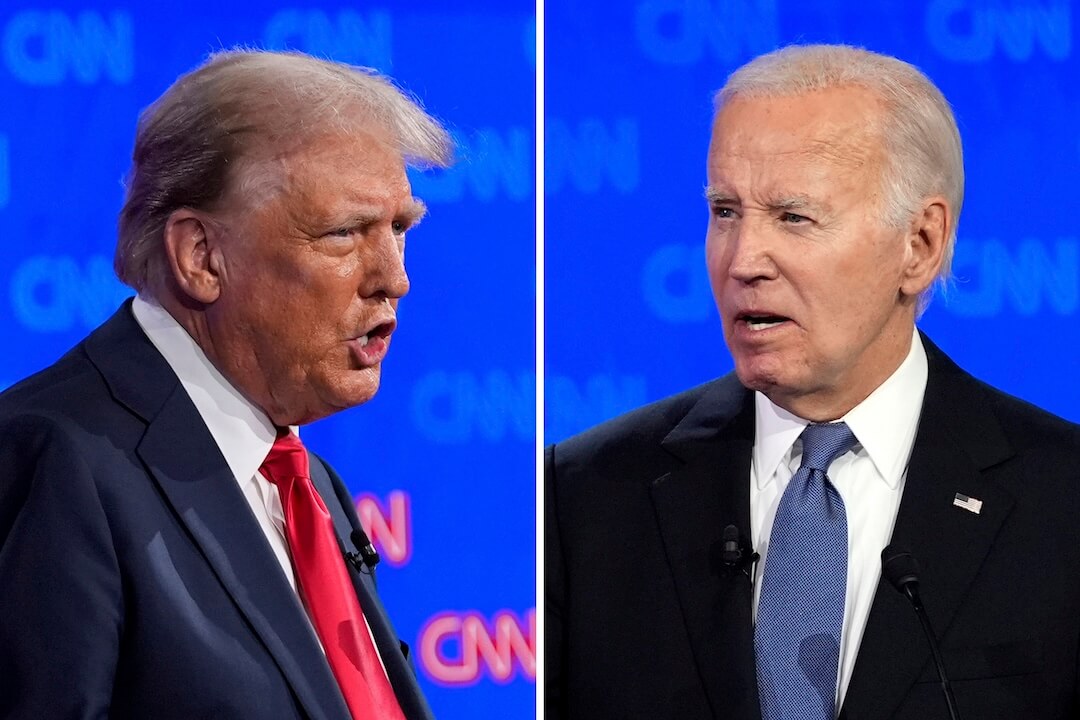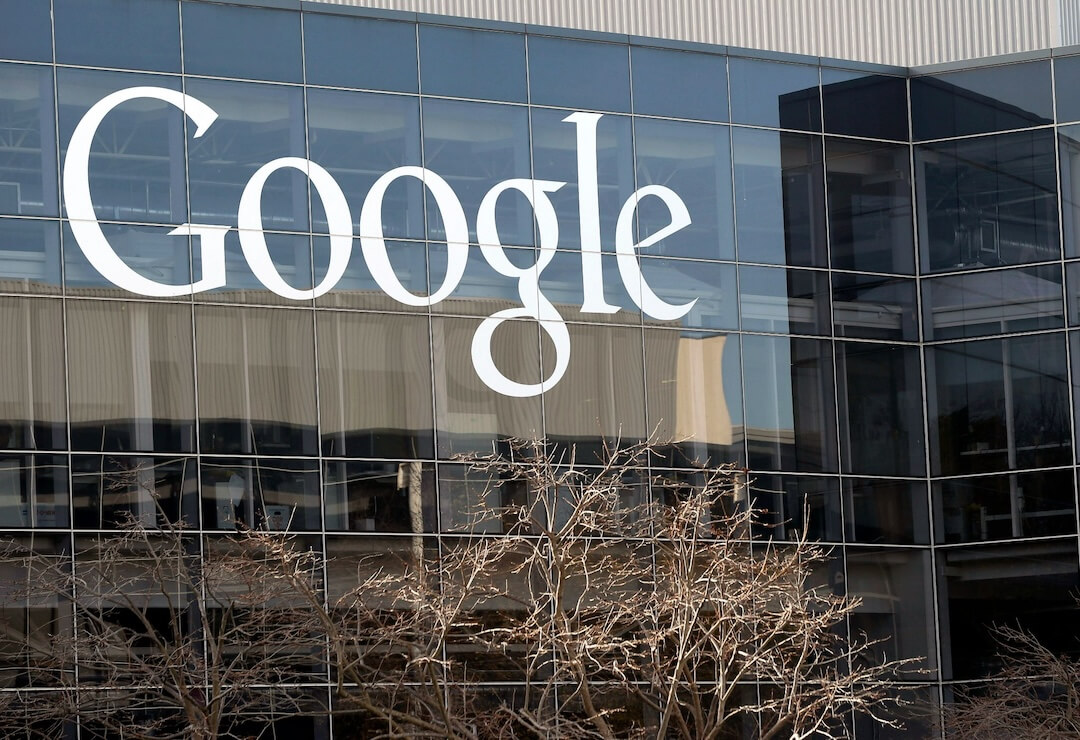
A police device rolls toward a copter device, right, that landed on the West Front of the Capitol in Washington, Wednesday. (AP Photo/Lauren Victoria Burke)
Ben Montgomery started running. He sprinted, pushing himself as fast as he could go, burdened by a backpack containing his laptop. His quarry, which started out as a distant speck in the skies over Washington, D.C., had now descended on the nation’s capital, flying low in the April air.
It must have been an unusual sight for the rarefied skies around the United States Capitol Building on Wednesday afternoon. Here was a man aboard a lightweight craft borne aloft by helicopter blades and driven forward by a propeller, buzzing through protected airspace in open defiance of the law.
Before he saw it with his own eyes, Montgomery would have bet against the man making it this far. As a reporter with the Tampa Bay Times, he’d investigated child abuse, profiled an escape artist and plumbed the mysteries of a deadly underwater cave. But this was one of the craziest stories he’d ever done. It was a story that would soon seize the national spotlight, provoke debate among media experts and spark a conversation about the security of the airspace around America’s centers of power.
But as Montgomery gave chase Wednesday afternoon, he was focused on seeing how the pilot’s mission — a story he’d been chronicling for months in advance — would end.
Takeoff
Months earlier, Montgomery was sitting at his desk in the Tampa bureau of the Poynter-owned Tampa Bay Times when his cellphone went off. The man on the other end of the phone didn’t identify himself by name, but what he had to say piqued Montgomery’s interest.
“I have planned an act of civil disobedience,” Montgomery remembers the man saying. “I’m not going to harm anyone else, but I might get harmed. And in the event that happens, I need somebody to share my backstory.”
Intrigued, Montgomery extended an invitation for coffee. Within a week or two, they met up at Starbucks, and the man, a postal worker named Doug Hughes, outlined his plan. Hughes wanted to draw attention to campaign finance reform, and he was willing to go to great lengths to do it. Specifically, he planned to fly a gyrocopter into the protected airspace above Washington, D.C., land on the lawn of the United States Capitol Building and deliver “535 letters of protest to 535 members of Congress.”
As he listened, Montgomery was struck with the impression that he was dealing with a credible source. Hughes came across as a fantastic conversationalist, a well-read man who’d held a steady job for more than a decade. He talked deeply and openly about his son’s suicide, his relationship with his wife, his 12-year-old daughter. But mostly he talked about campaign finance reform, an issue that animated him. One of their early meetings went so long that Montgomery, who had to leave to watch his kids, invited Hughes back to his house to continue the discussion.
“His passion about campaign finance reform was the dominant part of our conversation,” Montgomery said. “It was almost like the plan was sort of subsidiary to the idea that he needed to show America.”
After the next editorial meeting at the Tampa Bay Times, Montgomery says he talked to Bill Duryea, then the paper’s national editor, about the possibility of a story. It was a novel idea, but there was no guarantee that Hughes was going to go through with his flight. So the paper adopted a wait-and-see approach.
Over the next few months, it gradually became clear to Montgomery that Hughes’ plan was taking shape. One day when they checked in with one another, Hughes had all the envelopes addressed. The next time they talked, he had the letters written. Soon, he’d logged enough flight hours to feel comfortable enough to complete his mission. Finally, Hughes told Montgomery that he’d booked a hotel room for a week in April, outlining a possible window for his stunt.
“All the pieces were sliding into place and everything pointed toward him actually trying to do this,” Montgomery said.
During the run-up to Hughes’ flight, Montgomery says he kept a “tall journalistic wall” between himself and the subject of the story, taking precautions to ensure both men knew their relationship was strictly that of a reporter and his source. His usual reporting approach is to immerse himself in his subjects’ lives in to gain access to deeper emotions that make for better stories. But that wasn’t the case with Hughes, Montgomery said. They only spoke with each other about five times after their initial contact, and Montgomery was careful not to give any indication that he supported Hughes’ endeavor. Weeks before he flew into capital airspace, representatives from the Tampa Bay Times asked Hughes on tape whether the decision to carry out the stunt was affected in any way by the paper’s coverage. Hughes said no, that he’d be taking off whether the newspaper was covering it or not.
Still, Montgomery said, the editorial team at the Tampa Bay Times talked over the ethical and moral implications of the story for hours. They pondered worst-case scenarios, such as the possibility that the gyrocopter could crash-land on bystanders, or that Hughes himself would be harmed. They sought legal counsel. The decision to go with the story, Montgomery said, was eased by two different factors. First, Hughes told the paper that he’d been visited twice by the Secret Service, a claim he backed up with a business card from those encounters. And second, Montgomery said Hughes’ behavior was inconsistent with somebody who intended to commit a violent act. If he intended to hurt other people, why go to the trouble of stuffing 535 envelopes with letters and spending $250 on stamps? Why notify the media in advance and notify the authorities shortly after takeoff?
“Everything in the development of this plan suggested that this is a guy who’s going to commit an act of civil disobedience and is not going to harm anyone and hopes he wasn’t going to harm himself,” Montgomery said.
Tampa Bay Times editor Neil Brown says he was first made aware of the story when managing editor Jennifer Orsi notified him that she, Montgomery and a lawyer had met to discuss going through with the article.
Brown says his initial impression of Hughes’ plot was “a quixotic idea for an act of civil disobedience,” a scheme that probably wouldn’t even work. He probed Montgomery to get a feel for Hughes’ motivations and concluded that they were honest — and naive. Still not convinced Hughes was going to complete his journey, he greenlit a road trip to the capital, sending both Montgomery and photographer James Borchuck to cover the story.
When asked whether he felt a responsibility to alert police in advance that Hughes intended to break the law, Brown echoed Montgomery’s stated reasons for not reporting the 61-year-old mailman: They were sure that the authorities were aware of his plan on some level, and the paper didn’t feel a responsibility to operate on the government’s behalf.
“At some point we had to decide: Are we going to tell this story?” Brown said. “How would we tell it? And are we willing to not tell it if we decide there’s no story here?”
Landing
On Wednesday, Montgomery was waiting with Borchuck in D.C. when his cellphone went off once again. He recognized the number — it was Hughes. He picked up, but the noise of the gyrocopter made the three-minute phone call unintelligible. At that point, they began using the mailman’s livestreaming feed to track his progress.
At some point after Hughes went into the air, Brown says he got a call from Montgomery. “It’s incredible,” Brown remembers Montgomery saying. “But he’s up.”
After a period of time, a reporter at the Tampa Bay Times placed a call with Capitol Police to ask if they were aware that Hughes was inbound, Brown said. The call was a journalistic query seeking comment and was not intended to tip-off law enforcement to Hughes’ stunt, he said.
Meanwhile, back in D.C., Montgomery and Borchuck were stationed on a plateau by the Washington Monument, waiting anxiously for any sign of Hughes. When the tiny dot of a gyrocopter began getting larger, Montgomery realized how far he was from the Capitol Building and took off running.
Montgomery estimates he missed Hughes’ descent to the lawn of the capital building by about two minutes. When he arrived, he interviewed “a dozen or so” witnesses who saw him touch down. After months of uncertainty, it was a relief to see Hughes land unhurt.
In the aftermath of Hughes’ flight, several outlets — including Poynter — called into question the Tampa Bay Times’ decision not to notify police in advance. Montgomery says he stands by the paper’s decision to follow the story without prejudice as it unfolded.
“I’d do it again.”





